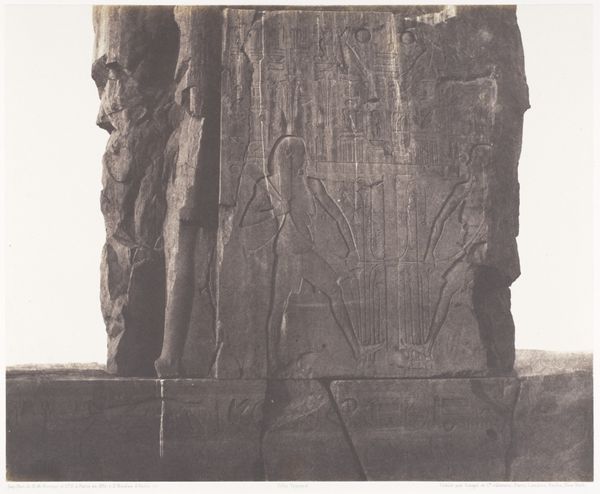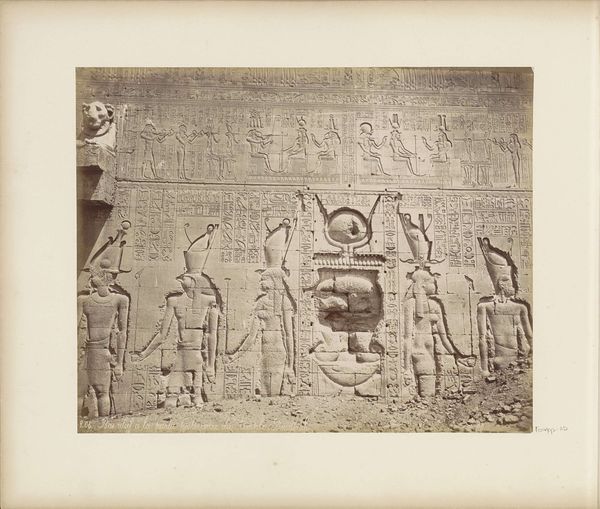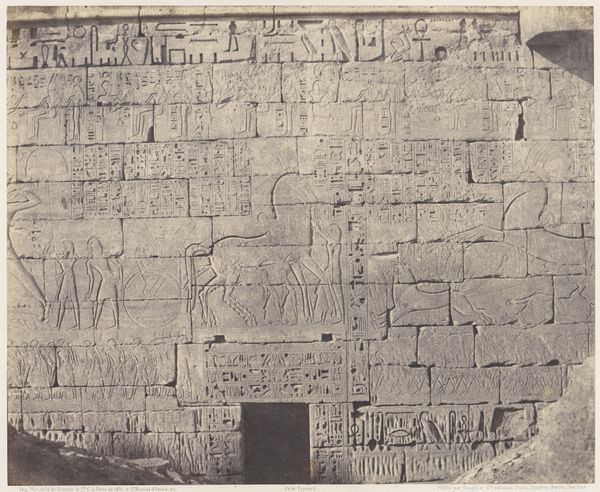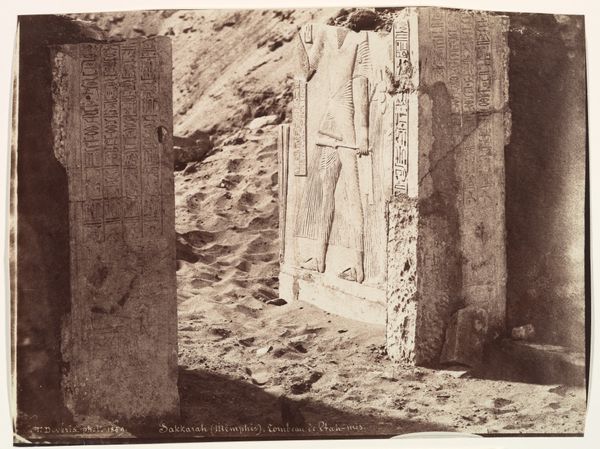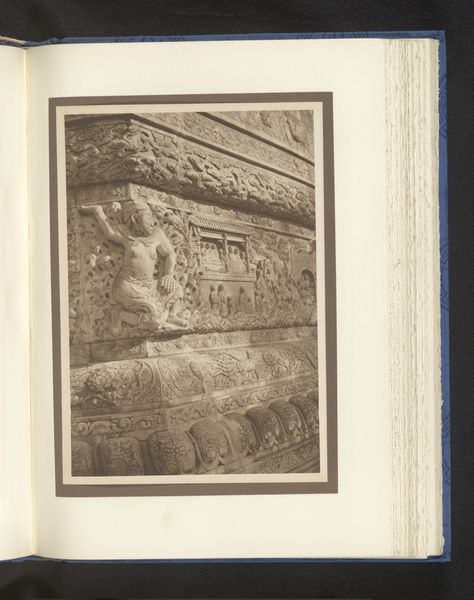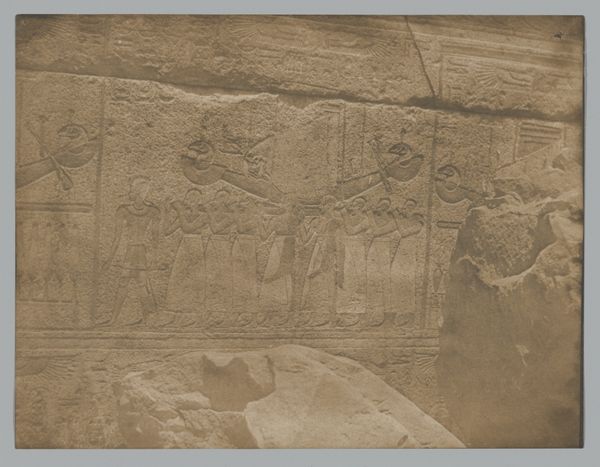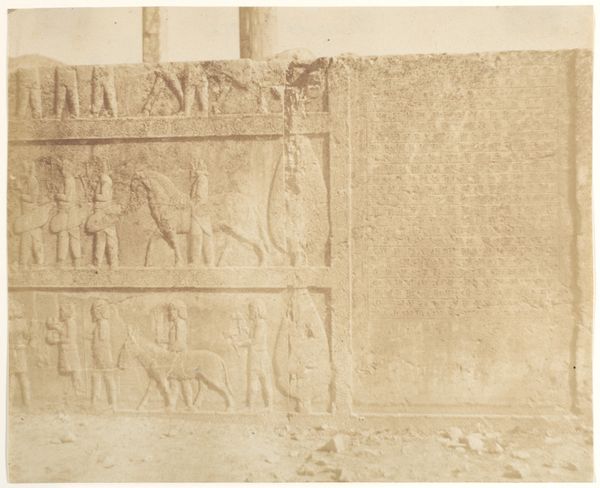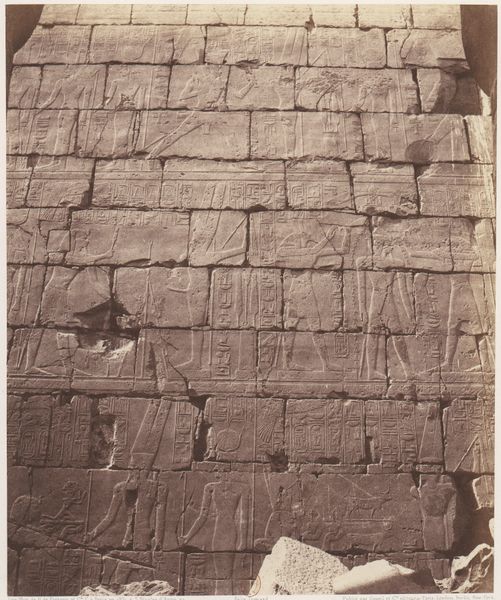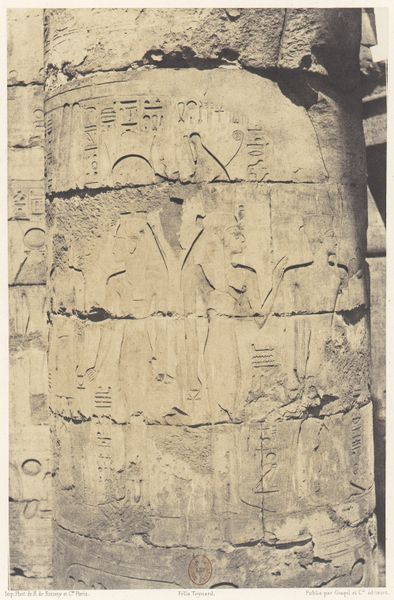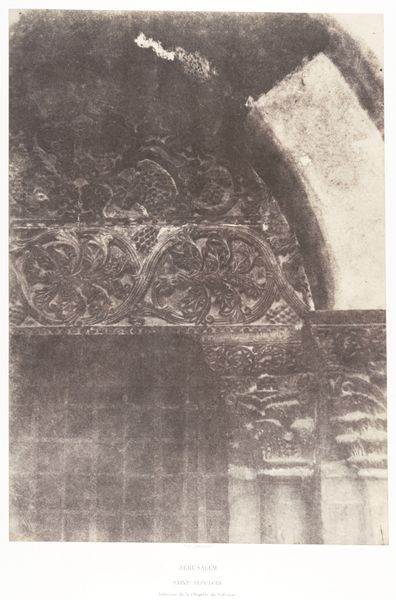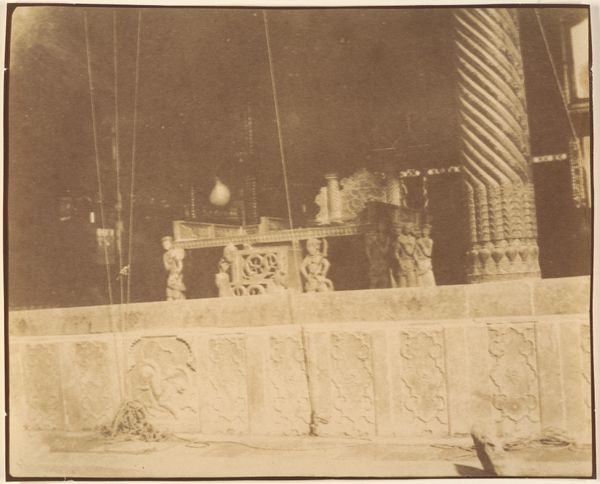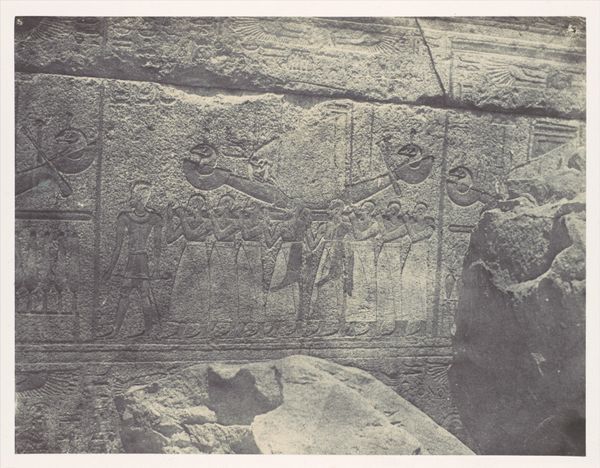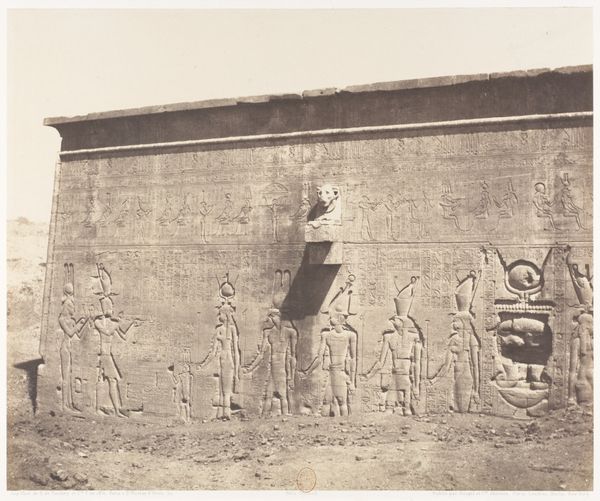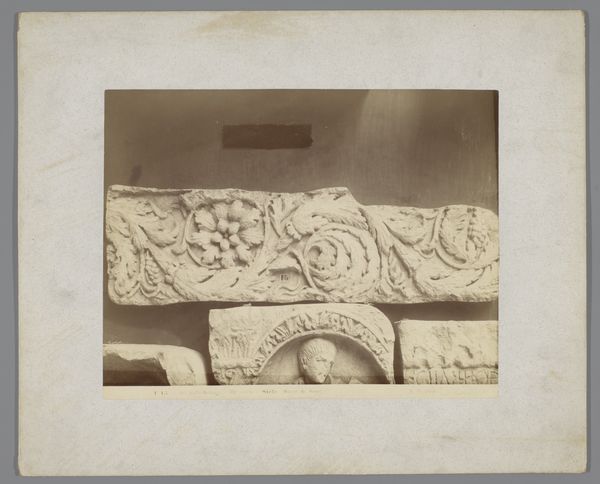![(18) [Inscription, Old Persian in Cuneiform] by Luigi Pesce](/_next/image?url=https%3A%2F%2Fd2w8kbdekdi1gv.cloudfront.net%2FeyJidWNrZXQiOiAiYXJ0ZXJhLWltYWdlcy1idWNrZXQiLCAia2V5IjogImFydHdvcmtzLzY1YjY5NzU5LTk2YjktNDk1Mi1iMGYyLWExYWFiOTc0ZTlmNC82NWI2OTc1OS05NmI5LTQ5NTItYjBmMi1hMWFhYjk3NGU5ZjRfZnVsbC5qcGciLCAiZWRpdHMiOiB7InJlc2l6ZSI6IHsid2lkdGgiOiAxOTIwLCAiaGVpZ2h0IjogMTkyMCwgImZpdCI6ICJpbnNpZGUifX19&w=3840&q=75)
(18) [Inscription, Old Persian in Cuneiform] 1840 - 1869
0:00
0:00
carving, print, photography, architecture
#
carving
# print
#
photography
#
carved into stone
#
ancient-mediterranean
#
islamic-art
#
history-painting
#
architecture
Copyright: Public Domain
This photograph by Luigi Pesce captures an ancient inscription in Old Persian cuneiform, a script used by the Achaemenid Empire. Note the rosette motifs adorning the top, each a solar symbol signifying royalty, divinity, and cosmic harmony. The rosette, a timeless emblem, persists across epochs. We see it blooming in ancient Mesopotamia, Egypt, and later gracing Gothic cathedrals as rose windows. Its evolution reveals a deep-seated human impulse to capture the sun's life-giving energy. Like the sun's cyclical path, the rosette motif reappears, each time carrying echoes of its past, yet imbued with new cultural resonance. The text in cuneiform, with its wedge-shaped characters, speaks of power and order. In this inscription, these symbols were intended to convey messages of power and authority. The script's very form, pressed into clay or stone, suggests permanence, a desire to transcend time. It embodies humanity's enduring quest to immortalize itself, a psychoanalytic projection of our deepest fears of mortality, forever etched in stone.
Comments
No comments
Be the first to comment and join the conversation on the ultimate creative platform.
